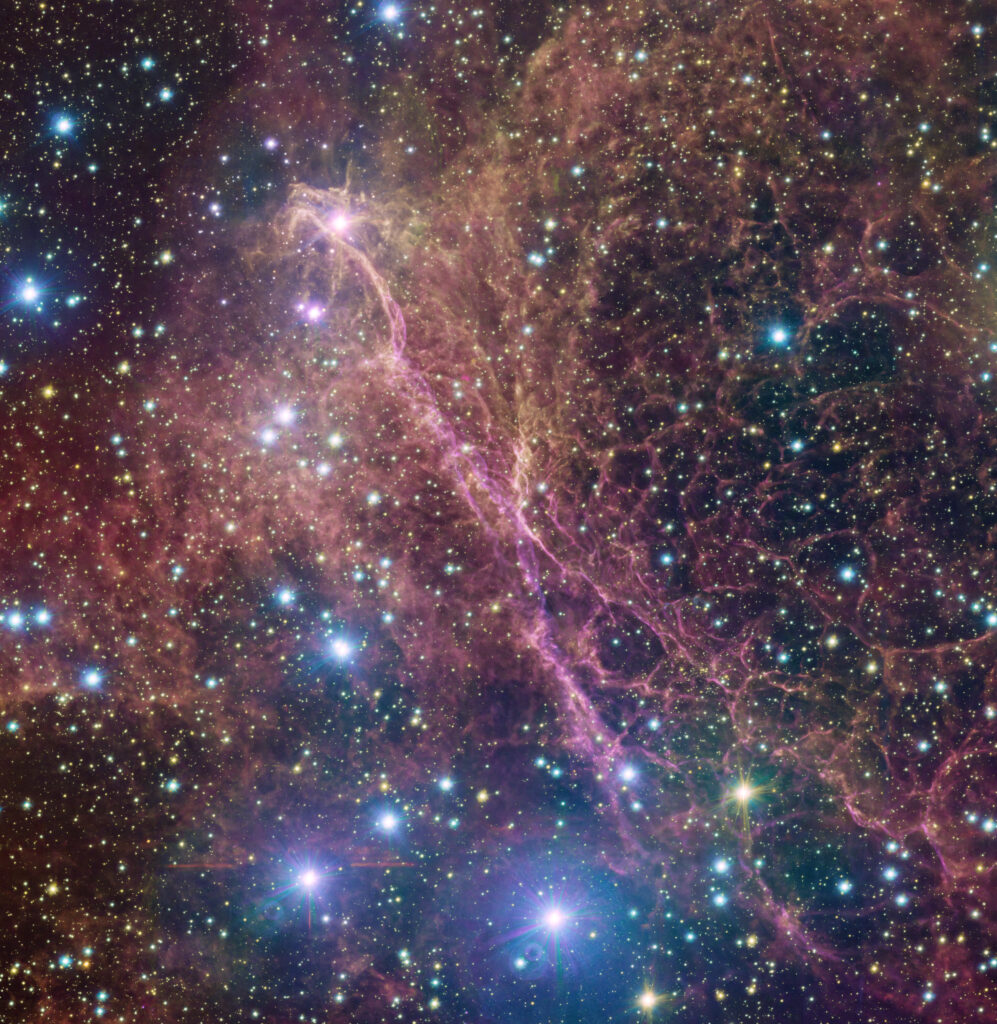The presented image was taken by the VLT Survey Telescope (VST) located in the Chilean Atacama Desert. It demonstrates one section of the constellation Vela in the southern sky.

The VST image captures pink and orange filamentous clouds, somewhat resembling the ghostly shadow of a space bird with wide orange wings, a long pink body, and a bright pinkish star as an eye. Numerous stars are also scattered throughout the image.
This beautiful picture was generated by a cataclysm that occurred about 11 thousand years ago. There was once a massive star in this region. But over time, it exhausted its reserves of thermonuclear fuel, which led to the collapse of its core, accompanied by a colossal explosion. According to scientists, the supernova shone so brightly that it was visible even in the daytime sky.
As for the star, when it exploded, its outer layers were ejected into the surrounding gas environment. Shock waves passed through them, compressing matter and creating complex fibrous structures. The energy released at the same time warmed up the gas strands, making them shine brightly. This is what the published photo demonstrates.
A superdense ball with a diameter of only a few tens of kilometers remained from the dead star, in which protons and electrons clumped together to form neutrons. Such objects are called neutron stars. The neutron star in the Vela supernova remnant is located outside the region captured in the photo. It rotates at a speed of about ten revolutions per second.
According to https://www.eso.org
Follow us on Twitter to get the most interesting space news in time
https://twitter.com/ust_magazine


